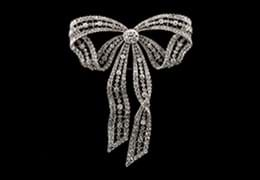Eiswein | Wine, Champagne and Spirits | 28 March 2023
On 28 March we have our Wine, Champagne and Spirits auction. This online auction, part of our monthly series held in conjunction with Bid for Wine, features an eclectic assortment of wines ranging from single bottles to individual cases. A particular highlight are three bottles of 1965 Hermannshof, Niersteiner Eiswein, Weingut Hermann Franz Schmitt. Dreweatts Senior Wine Consultant, Mark Robertson, tells us more about this wine.

There is a romance to Eiswein - with nature and mankind working hand in hand to create something unique. This is not the reverse osmosis machines or selection robotics of Bordeaux, but a blurry eyed German and a long suffering family selecting grapes on a steep hillside in the middle of a freezing night. When one opens a bottle, I always try to imagine how it first began.
Pliny the Elder, alluded to the first documented production of Ice-wine, suggesting that certain grape varieties should be left on the vine until the first frost. Although he also said “Fortune favours the bold” whilst sailing towards a volcano, it is very apt to describe how the growers produce this elixir.

It was not until 1800 years later, in 1830, that we have the first definitive documented Eiswein in Germany. Instead of creating animal fodder with the Frozen grapes, some plucky, inquisitive growers pressed and fermented their grapes. Until 1961 Eiswein harvests were a very rare occurrence - only six vintages of Eiswein were recorded in the 19th century alone and it was from 1961, with the advent of new equipment, that production could only start to be scaled up and become part of a winemakers portfolio.
Grown all over the world now, with Canada very much a flag bearer for the style, I feel it is still the German wines that stir the senses. Unlike many other great sweet wines, Ice-wine is not made from Botrytis affected or late harvested grapes, but rather from the must concentrated by the frost. This not only creates an intensely sweet style, but also a searing freshness - almost onomatopoeic!
In March, we are delighted to offer three bottles from 1965, not only marking this defining period but also making them incredibly rare. Looking at the labels and capsules, I suspect these wines had been aged for many years in the producer’s cellar and only released in the last 20 years. They have been stored beautifully ever since. I believe something special awaits.
Auction Details
Online Auction
Tuesday 28 March | 12 noon BST















